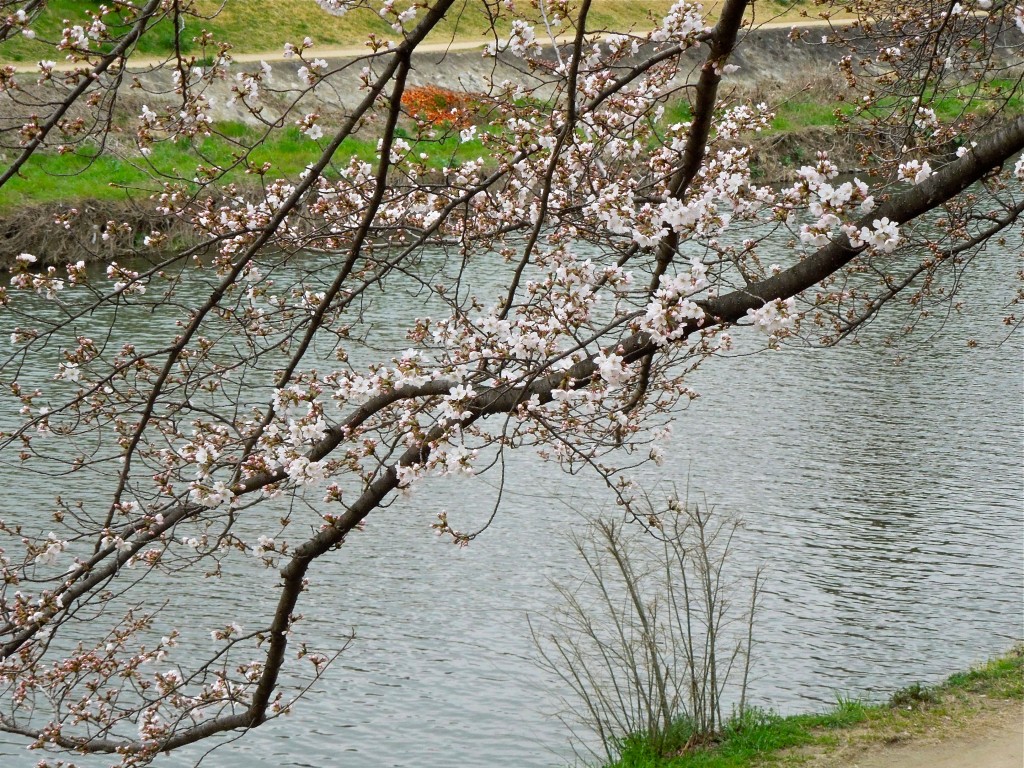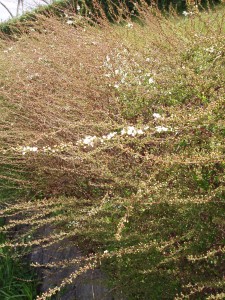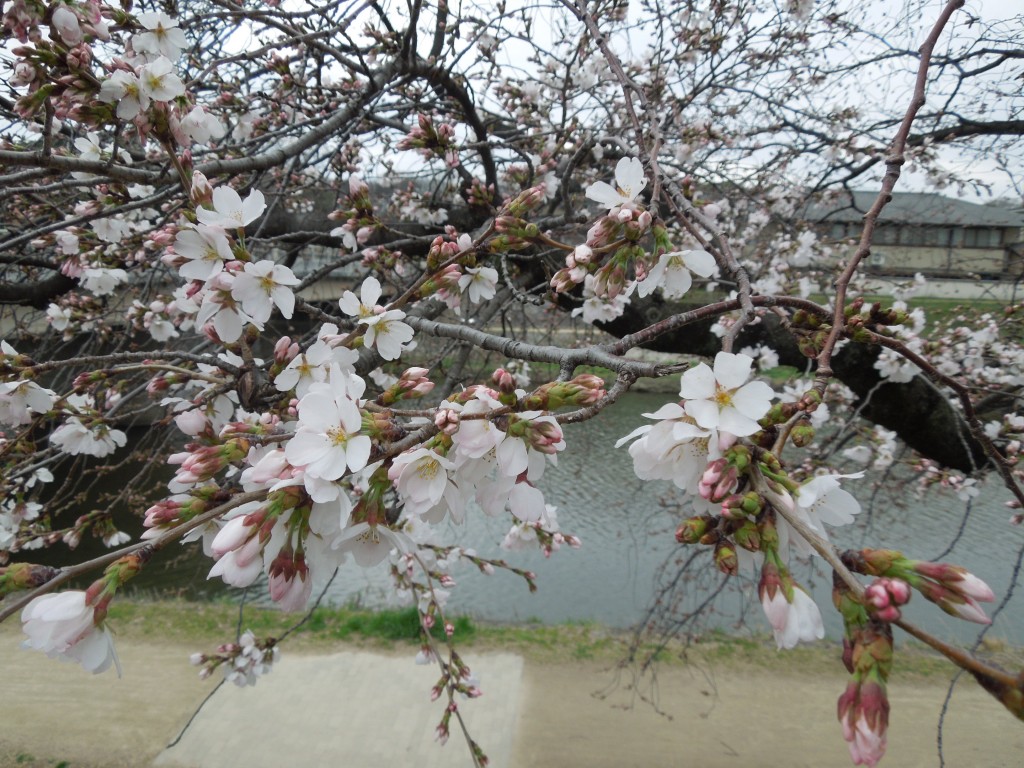
Incipient cherry blossom along the Kamogawa in Kyoto
Here in Kyoto all the promise of early spring has been evident in the sunny warm 20 degrees we’ve enjoyed today. From my kitchen window I can see the cherry blossom trees lining the river are on the brink of bursting out into full bloom.
Spring in Shinto terms is a time when the mountain kami (yama no kami) descends to bring new growth to the rice fields, becoming the ta no kami. It’s a time of fertility and planting festivals, filled with hope for a good growing season. Over the next few weeks a whole host of shrines will be holding events of various kinds in celebration of the turning season.

Resurgent nature with the promise of spring
Early Japanese poetry had a close connection with kami and the seasons. Indeed, there may well be divine origins to the poetry, as earlier postings have suggested (see here or here). Ronald Blyth in a section of his magnum opus entitled *The Spiritual Origins of Haiku’ had this to say…
The relation of Shinto to haiku is a vital one, but owing to the obscurity of the nature of Shinto it is difficult to write clearly on the subject… primitive, or crude Shinto, which still persists throughout Japan, both expresses the national character and affects it. As far as it concerns haiku, there are two aspects of this Shinto which we must describe, animism and simplicity.
The oldest collection of poetry, Manyoshu, was compiled in the eighth century and showed seasonal awareness along with Shinto themes of kami worship, sincerity and manly purity of heart. Like Elizabethan poetry, there’s a freshness redolent of spring and new beginnings, as captured here by Otomo no Yakamochi (718-785):
In the spring garden
The glow of deep pink peach blossoms-
Onto the radiant path beneath
A young girl comes out.
Japan’s most famous poet, Matsuo Basho (1644-94), wrote a haiku after visiting Ise Shrine suggestive of the heady perfume of spring yet with strong animist overtones for it was written in imitation of an earlier poet-wanderer, the monk Saigyo, whom Basho greatly admired and who had written ‘What divine being/graces this place/ I know not.’
from what tree’s
blossoms I know not:
such fragrance
Finally, a poem by my favourite haiku writer, Kobayashi Issa (1763-1828), which captures something of the wonder of the season and that awe at life that underwrites Shinto in its purest form. Quite delightful, I think….
How very strange!
To be alive
Beneath cherry blossom


Leave a Reply